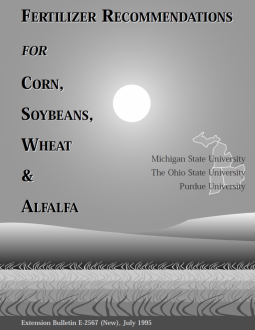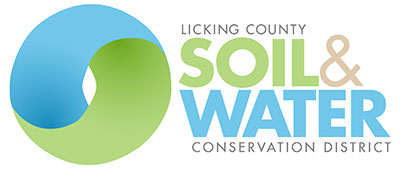
Fertilizer is a major input cost for most grain producers, accounting for 35-40% or more of total operating costs according to USDA. Licking Soil & Water recommends applying fertilizer based on 1) recommendations interpreted from correctly sampled soils; 2) the 4R Approach: Right Source, Right Rate, Right Time, Right Place; and 3) the Tri-State Fertilizer Recommendations for Corn, Soybeans, Wheat, and Alfalfa (TSFR).
First published in 1995, the TSFR are being updated to consider improved crop genetics, nutrient levels, and market changes. Ohio-based research shows that yield responses to potassium and phosphorus fertilizer at or above current maintenance levels are rare. Grains are taking up less potassium and phosphorus from the soil than they were two decades ago, suggesting it will take longer for soils with elevated concentrations of these nutrients to be decreased to more desirable levels. Long-term, Ohio soils in the current maintenance range for phosphorus and potassium can supply sufficient amounts of these nutrients to meet corn and soybean demand for many growing seasons without supplementing these nutrients.
Past TSFR recommendations for nitrogen have focused on increasing yield. However, the TSFR update will base corn nitrogen recommendations on maximizing producer profitability, not necessarily yield. A higher yield generally can be realized by applying additional nitrogen, but only to a certain point. For each unit of nitrogen applied past a certain point, less of an increase in yield is realized. That means reduced profitability because the cost of each unit of nitrogen is the same, regardless of yield.
The updated TSFR is expected to be released soon and provide producers an additional resource in making sound and profitable fertilizer decisions. Many resources are available to assist producers in selecting fertilizer sources and rates. For more information, contact Dave Grum, 740-670-5330, agtech@LickingSWCD.com.



